An undeniable fact is that Pamplona has a conquering soul and it is difficult not to succumb to its charms. Pamplona is the capital of Navarra.
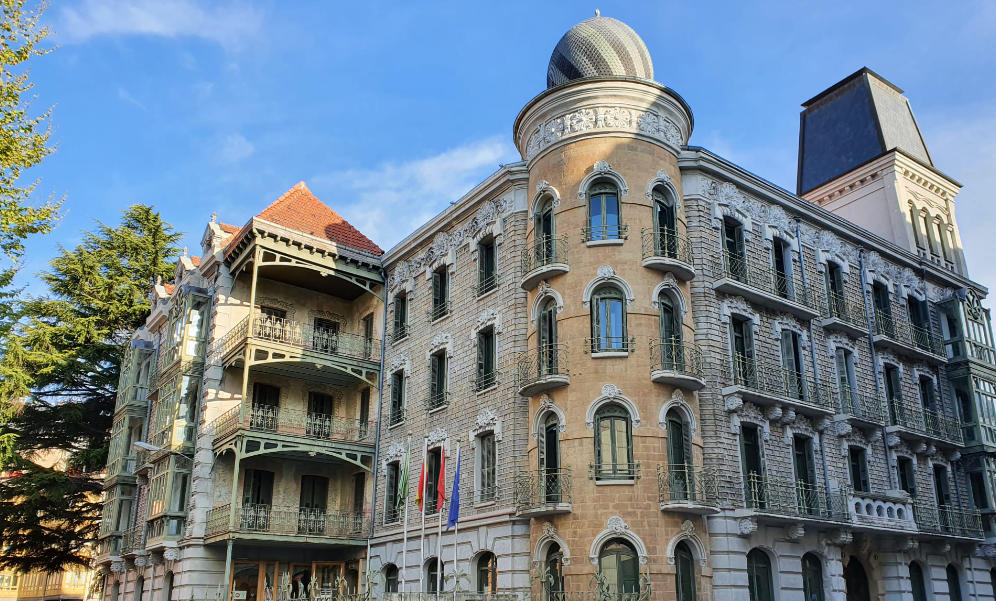
And, without a doubt, it is the largest city in the province. Besides being home to one of the biggest festivals in the world, San Fermin, Pamplona has much more to offer. And, fortunately, I realized this fact.
It is possible to get away from the hustle and bustle of city life without leaving the city.
There are possibilities for cultural visits, to go to the city walls or to have an incredible time at the world-famous festivals. It is possible to eat exquisite pinchos, be in the midst of a cultural atmosphere, and witness a quality of life that is palpable as soon as you arrive in the city.
To my taste, Pamplona is a perfect destination for a weekend, so it is best to reserve two days or a long weekend.
A bit of context
Pamplona is located in the north of the Iberian Peninsula, and the center of the Pamplona basin. It straddles both banks of the Arga River.
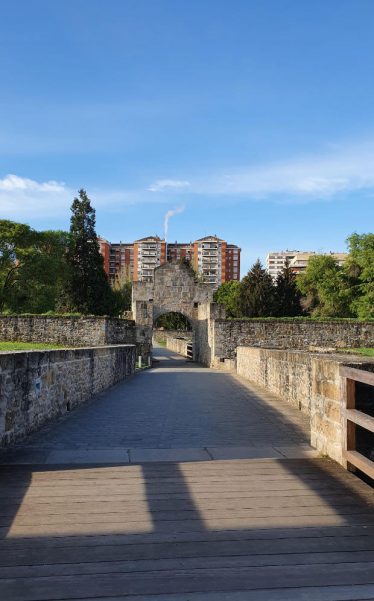
Traditionally it has been believed that the city was founded in 74 BC by the Roman general Pompey as Pompaelo or Pompelo over a pre-existing settlement. From then on, the city would become one of the most important towns in the territory of the Vascones.
Like other cities in Spain, Pamplona has gone through several dominations. It was in the year 1000 to 1035, during the reign of Sancho III, when the city became the capital of Navarre. In 1571, Pamplona became the most heavily fortified city in the north.
On the other hand, the second half of the 20th century was the beginning of the demographic, industrial and economic growth of Pamplona.
Pamplona became known for its ancient craftsmanship of sandals, wineskins, rope and pottery.
In Basque, Pamplona is called Iruña.
A detail that I love is that they have their own vocabulary. Some of these magnificent expressions are Hacer pella: not to go to school, velador: bar terrace, moce: kid, ser laminero: to have a sweet tooth, ir en burra: to go by bus and mostillo: crybaby.
In Pamplona, it is possible to reach all the tourist attractions on foot, as most of them are concentrated in the Casco Viejo and its surroundings. For that reason, you probably won’t need any means of transportation.
However, it may be of interest to know that, although there is no metro or streetcar in Pamplona, 25 bus lines are running throughout the city during the day (10 at night).
Important information
Pamplona owes part of its fame to its adopted son Ernest Hemingway, who spent time in Navarra during the Spanish Civil War and was a great admirer of the San Fermín festivities. Hemingway wrote about the fiestas and the running of the bulls in his novel “The sun also rises”.
The San Fermín festivities begin on July 6 and last for a whole week. During those days, the city is invaded by more than a million visitors and tourists. Of course, every morning the corresponding running of the bulls takes place, in which hundreds of people run in front of the bulls through the narrow streets of the Casco Viejo. The running of the bulls lasts only a few minutes and in the afternoon the corresponding bullfight takes place. Many other events and activities also take place during the San Fermín festivities, such as parades, exhibitions, and Basque sports competitions, among others.
During the rest of the year, Pamplona, or Iruña as it is called in Basque, is a fairly quiet city. However, there is a constant flow of tourists.
Where to start?
I think the best way to start discovering the capital of Navarra is precise with a visit to the old town. It is the most beautiful area of the city.
Most of the streets are pedestrianized and wind their way through the historic heart of the city, all among medieval churches, palaces, bars, and restaurants.
The Plaza del Castillo is the center and exactly there, is where Ernest Hemingway used to sit and drink coffee while working on his book “Fiesta”.
In the Casco Viejo of Pamplona, you can see the cathedral, the church of San Nicolas, the church of San Saturnino, the church of San Lorenzo, the town hall, and the Museum of Navarra.
Located in the Old Quarter of Pamplona, the Cathedral of Santa María la Real is probably the monument that contains the greatest amount of historical and artistic treasures in the city.
The cathedral is part of the cathedral museum. This museum contains not only the most common buildings of other cathedrals such as the church, the cloister, and the sacristy but also preserves the cillería, the refectory, the chapel, the kitchen, and the dormitories.
Although the spaces that can be visited today were built at different times, most of the cathedral was built during the fourteenth and fifteenth centuries.
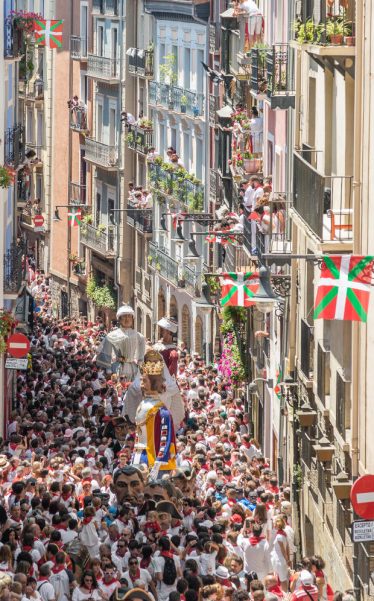
A Roman temple was previously located in the same place.
In front of the cathedral’s presbytery is the mausoleum of King Charles III and his wife. Charles III was responsible for the unification of the city in 1423.
Under his tomb, there is a crypt with the remains of all the kings of the Kingdom of Navarre since 1134, but unfortunately, it is not open to the public.
It is probably best known as the icon of the San Fermin festival since this is where it begins. The Pamplona City Hall is located in the center of the Casco Viejo.
King Carlos III ordered its construction in 1423 at the point where the neighbourhoods of the three ethnic groups met, as a symbol of peace. Since then, the seat of the municipal government has been in this same location.
By the middle of the 18th century, the town hall was practically in ruins and, in 1752, the building was destroyed and rebuilt.
The new building became one of the most outstanding examples of baroque civil architecture in the city. But, in 1951 the building was demolished and this time the façade was preserved.
Sanfermines
San Fermín is one of the biggest festivals in the world and is celebrated every year from July 6 to 14 in Pamplona in honor of, as its name suggests, San Fermín.
Legend has it that San Fermín was the first bishop of Pamplona and that he baptized 40,000 pagans in 3 days.
The festivities begin on July 6 at noon with the chupinazo (a small rocket launched from the balcony of the town hall). During that week, Pamplona fills up with party people from all over the world, all wearing white T-shirts and red scarves.
In the running of the bulls, the runners are chased by 6 bulls for about 800 meters until they reach the bullring. It is a very dangerous activity.
Places to visit
The Museum of Navarre is a public museum of the Government of Navarre that houses an archaeological and artistic collection related to the history of Navarre. It is one of the most important museums in Pamplona.
Although it originally opened its doors in 1910, the Museum of Navarre has occupied the current building in the Old Quarter of Pamplona since 1956.
The collection of the Museum of Navarre consists of pieces ranging from prehistoric times to the 20th century. In addition to some Roman artifacts and mosaics, the other main attraction of the collection is the impressive portrait of the Marquis of San Adrian by Francisco Goya.
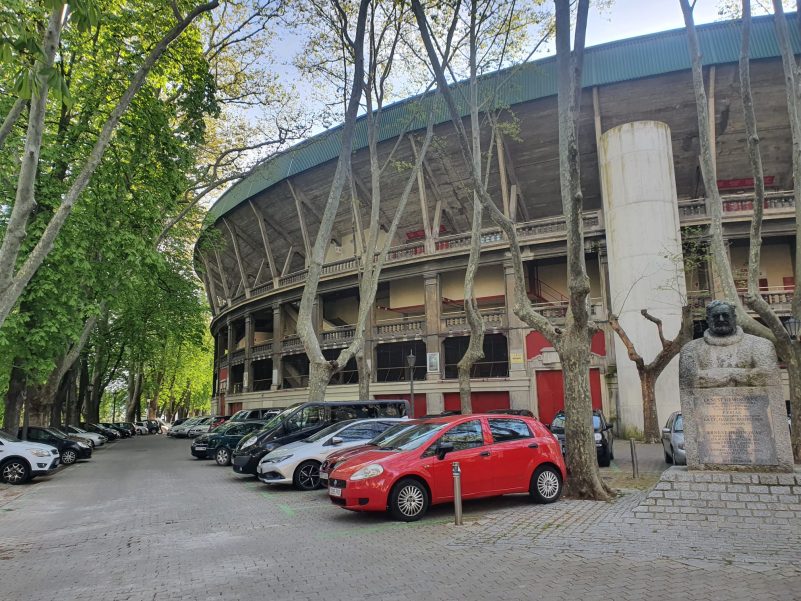
La PlazadeSince 1134, but unfortunately it is not open to the public.
On the other hand, from its beginnings, Pamplona was a fortified town surrounded by a wall. Unfortunately, much of the wall was demolished during the 1915 expansion of the city.
For those interested in learning more about Pamplona and its wall, it is possible to visit the Centro de Interpretación de las Fortificaciones, located on the corner of Arrieta and Aralar streets, next to the bullring.
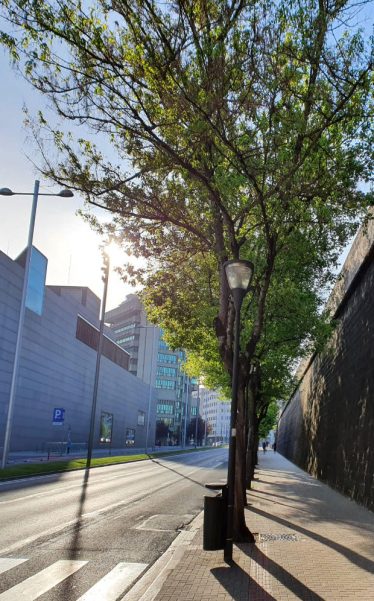
Another way to discover and enjoy the city is to go to Taconera Park. Created in 1830, it is the oldest and most elegant park in Pamplona. Its gardens are carefully tended and present beautiful and colorful floral decorations.
The bastion of the Taconera was built in the XVII century as a reinforcement of the new west front after the construction of the citadel.
The park is a lung. Among the trees in this park are slender beeches, leafy magnolias, and unique ginkgos Biloba. One of the most striking trees is the japonica sapphora.
Pamplona is a city with many parks. The most beautiful are: the Citadel, Yamaguchi, and La Taconera. The newest is Yamaguchi, and also the least known. There is a very nice lake where you can feed the ducks, ‘a spider’ is very fun for the kids and you can also take a look at the planetarium right there.
Concluding
It is a city with narrow, almost pedestrian streets. It is a city with many parks. The most beautiful: the Citadel, Yamaguchi and La Taconera.
In a weekend you have plenty of time to visit everything the city has to offer, and you will also have plenty of time to go out for tapas. It is a city hidden in the foothills of the Pyrenees. It has a quiet and relaxed atmosphere that most cities can only dream of. However, once the sun goes down, it’s a completely different story.


